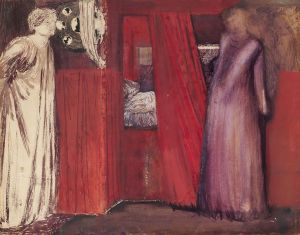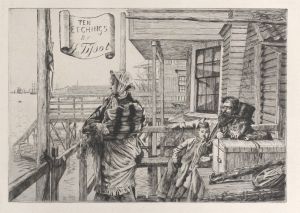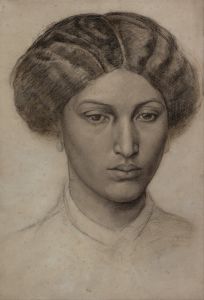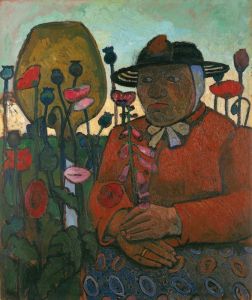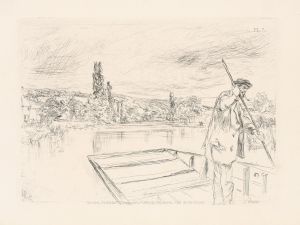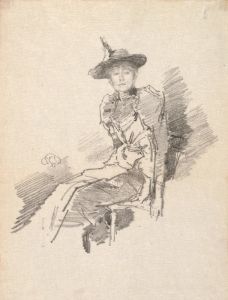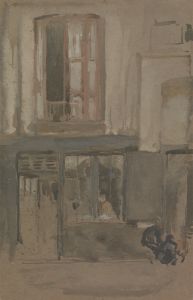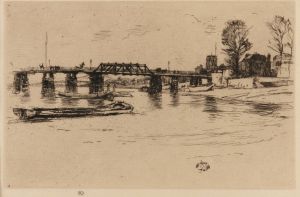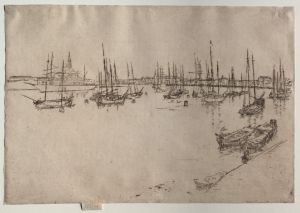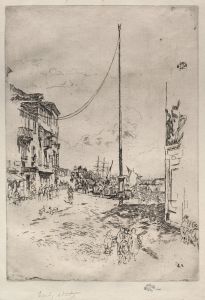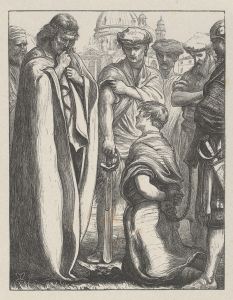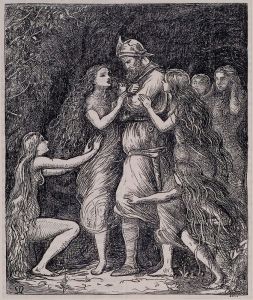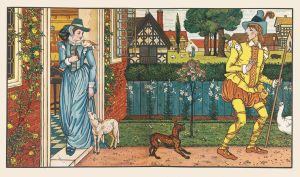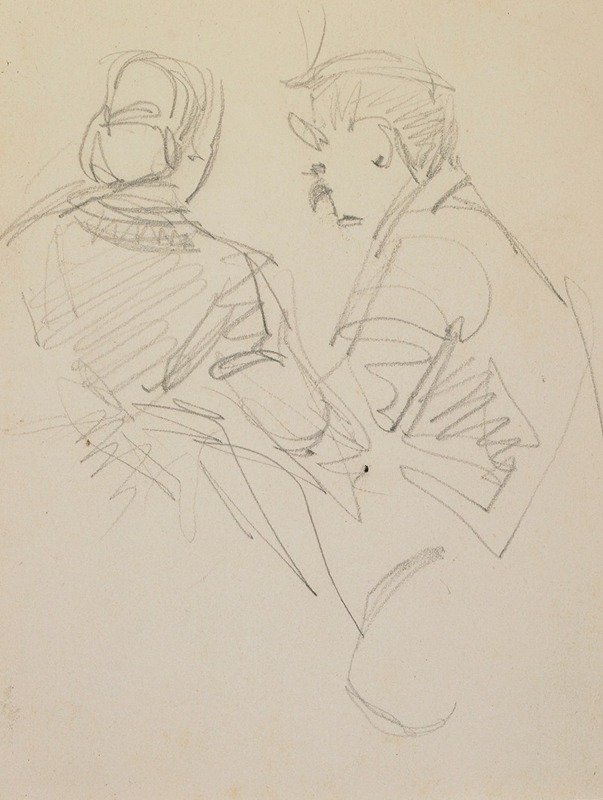
Two figures
A hand-painted replica of James Abbott McNeill Whistler’s masterpiece Two figures, meticulously crafted by professional artists to capture the true essence of the original. Each piece is created with museum-quality canvas and rare mineral pigments, carefully painted by experienced artists with delicate brushstrokes and rich, layered colors to perfectly recreate the texture of the original artwork. Unlike machine-printed reproductions, this hand-painted version brings the painting to life, infused with the artist’s emotions and skill in every stroke. Whether for personal collection or home decoration, it instantly elevates the artistic atmosphere of any space.
James Abbott McNeill Whistler (1834–1903) was an American artist known for his paintings, etchings, and lithographs. He was a leading figure in the Aesthetic Movement, which emphasized the importance of beauty and the visual and sensual qualities of art and design over practical, moral, or narrative considerations. Whistler's work was characterized by his innovative use of color and his focus on the harmony and composition of his pieces.
One of Whistler's notable works is "Two Figures," which exemplifies his distinctive style and approach to art. This painting, created in the late 19th century, showcases Whistler's skill in capturing the subtleties of human form and his interest in the interplay of light and shadow. The title "Two Figures" refers to the two subjects depicted in the artwork, though specific details about the identities of these figures or the exact context of the painting are not widely documented.
Whistler's technique in "Two Figures" reflects his broader artistic philosophy. He often employed a limited color palette, focusing on tonal harmony and the delicate balance of light and dark. This approach is evident in "Two Figures," where the subdued colors and soft transitions create a sense of intimacy and quietude. The figures are rendered with a sense of fluidity and grace, characteristic of Whistler's portraiture and figural studies.
Throughout his career, Whistler was influenced by various artistic movements and traditions, including Japanese art, which is evident in his compositional choices and use of space. "Two Figures" may also reflect these influences, as Whistler often incorporated elements of Japanese aesthetics into his work, such as asymmetry and an emphasis on simplicity.
Whistler's contributions to the art world extend beyond his individual paintings. He was a vocal advocate for the artist's creative autonomy and the idea that art should be appreciated for its beauty rather than its narrative content. His famous legal battle with art critic John Ruskin, who accused Whistler of "flinging a pot of paint in the public's face," underscored his belief in the artist's right to define their own work. This trial, which Whistler ultimately won, was a significant moment in the history of art criticism and the recognition of modern art.
"Two Figures" is a testament to Whistler's mastery of form and his dedication to the principles of the Aesthetic Movement. While specific details about the painting's creation and the identities of the figures remain limited, the work continues to be appreciated for its artistic qualities and its place within Whistler's oeuvre. Through pieces like "Two Figures," Whistler's legacy as a pioneer of modern art and a champion of beauty in art endures.





